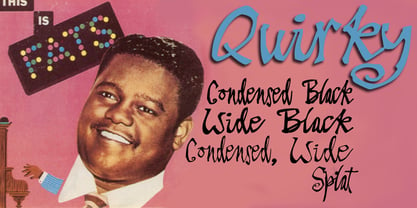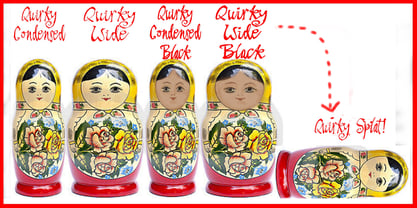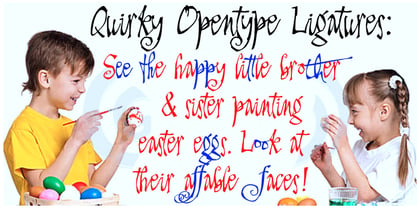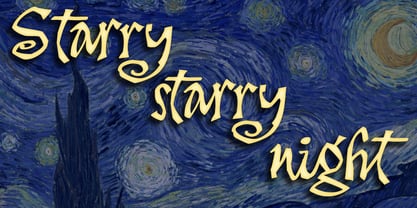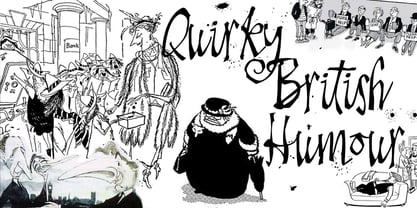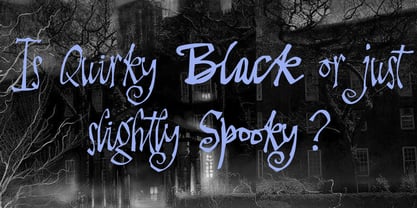About Quirky Font Family
The idea for Quirky was born while I was looking at a book of etchings by British artist Graham Clarke. His signature, crawling spider-like across the page, fascinated me with its casual, almost messy, inky dark and light drama. I started scribbling the alphabet as I imagined he would write it, based on his signature, then continued, adding curls, making the characters more angular, and refining the dramatic play between dark and light. Finally, Quirky appeared. Apparently casual, Quirky is, in fact, a true connected script.
Quirky is characteristic of contemporary handwriting: It appears loose, angular, unstructured, and free, while maintaining good form and legibility. Its baseline is varied, creating an impression of impatient handwriting, without losing legibility.
Quirky comes in five styles:
condensed -- the most dramatic form, with great drama between thick and thin
condensed black -- as with condensed but allows the user to provide exceptional emphasis
wide -- increased readability
wide black -- increased readability and emphasis
splat -- messy and ink-blotted -- a hint of grunge
Use Quirky for advertising, for humorous greeting cards, for a funky fashion look or tongue-in-cheek spooky media.
Quirky is a fully professional font with extensive use of OpenType Ligatures. For example: most common double letter combinations such as "ee" are rendered as two, slightly different shaped "e"s. This variation in letter shapes removes the cues by which the reader identifies that he is viewing a FONT and thus conveys a strong sense of hand-lettered text.
Language support includes all European character sets and has been designed to be used with the following languages:
Afrikaans, Albanian, Basque, Bemba, Cornish, Danish, Dutch, English, Estonian, Faroese, Filipino, Finnish, French, Galician, Ganda, German, Icelandic, Indonesian, Irish, Italian, Kinyarwanda, Luo, Malagasy, Malay, Manx, Morisyen, North Ndebele, Norwegian Bokmål, Norwegian Nynorsk, Nyankole, Oromo, Portuguese, Romansh, Sango, Shona, Somali, Spanish, Swahili, Swedish, Swiss German and Zulu.
Quirky
About Scholtz Fonts
Scholtz Fonts, started by Anton Scholtz in 1997, specializes in "African flavor" fonts.
The foundry is based in Durban, South Africa, where the Zulu culture of the region has greatly influenced Anton's font design. In his profession as a graphic designer, he became aware of how few available fonts were suitable for African inspired design.
He began to create his own fonts to enhance the work produced by his design company, and this branch of his design work h...
Read more
Read less

